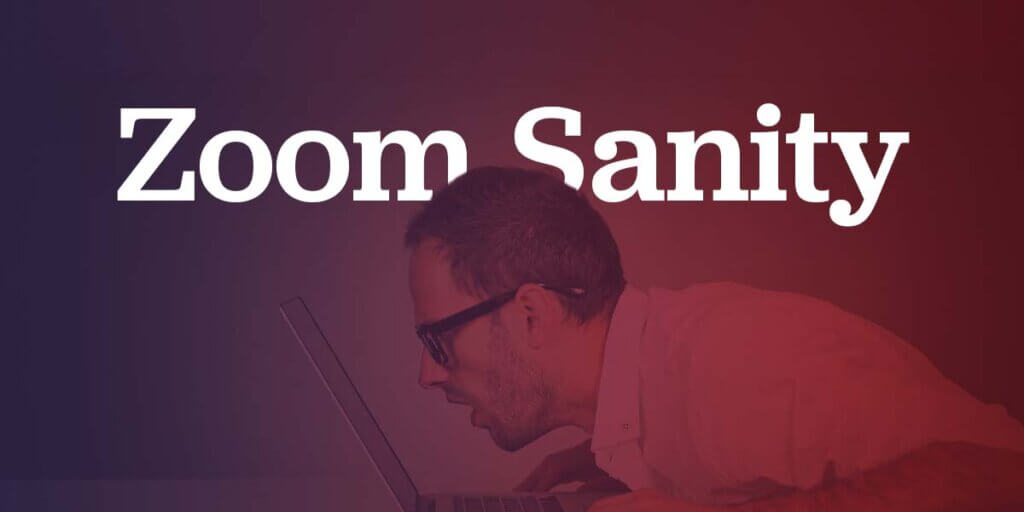ZEF & Zoom Sanity
David Carnes | February 2024

Imagine a world where back-to-back video meetings are the norm, turning us into screen-staring zombies by the end of the day.
In 2021, Stanford University coined the phenomenon “Zoom Fatigue.” They even created a tool to measure it – the Zoom Exhaustion & Fatigue (ZEF) Scale. While they admit the study has its limits- the results were clear.
The study unveiled the five forms of fatigue that haunt us after too much screen time:
- General fatigue – feeling tired, exhausted, and mentally drained
- Visual fatigue – experiencing blurred vision, irritated eyes, or pain around the eye area
- Social fatigue – a desire to be alone and avoid social situations
- Motivational fatigue – lack of energy, lack of desire or dread of doing other things
- Emotional fatigue – feeling irritable, moody, or emotionally drained
The specific causes for these types of exhaustion can vary from person to person. Still, experts have determined that our brains must work harder to focus. Staring at a group of faces on a screen differs from sitting around a conference table. Observing body language is challenging; we have limited physical mobility, and our brain defaults to partial attention. These are only a few reasons that video meetings leave individuals exhausted. The effects are often exacerbated in neurodivergent individuals. When our brains run on high power, they burn out quicker, leaving us with less energy and ability to focus.
Even with an understanding of the toll our brains and bodies take from video meetings, eliminating them altogether is impractical. Instead, we can take a few actions to lessen the adverse effects of Zoom fatigue.
The National Library of Medicine suggests the following:
- Limit distractions – Avoid multitasking while on a video call by closing other browser windows, putting away other devices, and keeping the video call on speaker view to avoid simultaneously processing each team member’s video.
- Create space – Declutter your work area and sit comfortably away from your screen. Providing physical space around you can reduce mental distractions and exhaustion, allowing the brain’s focus and energy to last longer.
- Limit video – When it makes sense, utilize audio-only calls or email messages instead of defaulting to a video call.
- Take breaks – Schedule time away from screens between each video call to move your body, rest your eyes, visually process the physical environment, and hydrate. These contribute to the body’s recharging and rebuilding energy and focus.
- Hide your video – Removing the ability to see yourself on the video screen helps many people reduce their in-meeting stress and cognitive load.
Remember, there’s no one-size-fits-all solution here. We’re all different, and so is our level of fatigue. Experiment with these strategies and see what works best for you. By giving your mind and body the care they deserve, you’re doing not only yourself but your team a favor.
